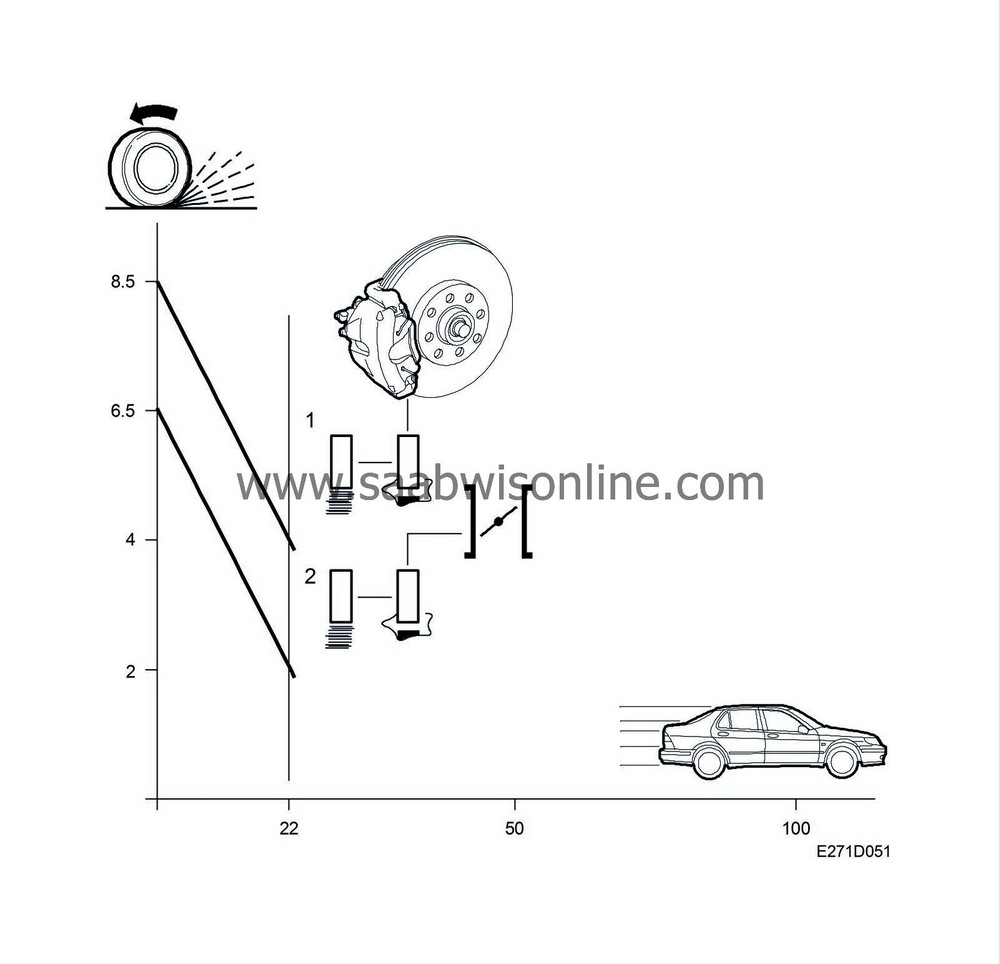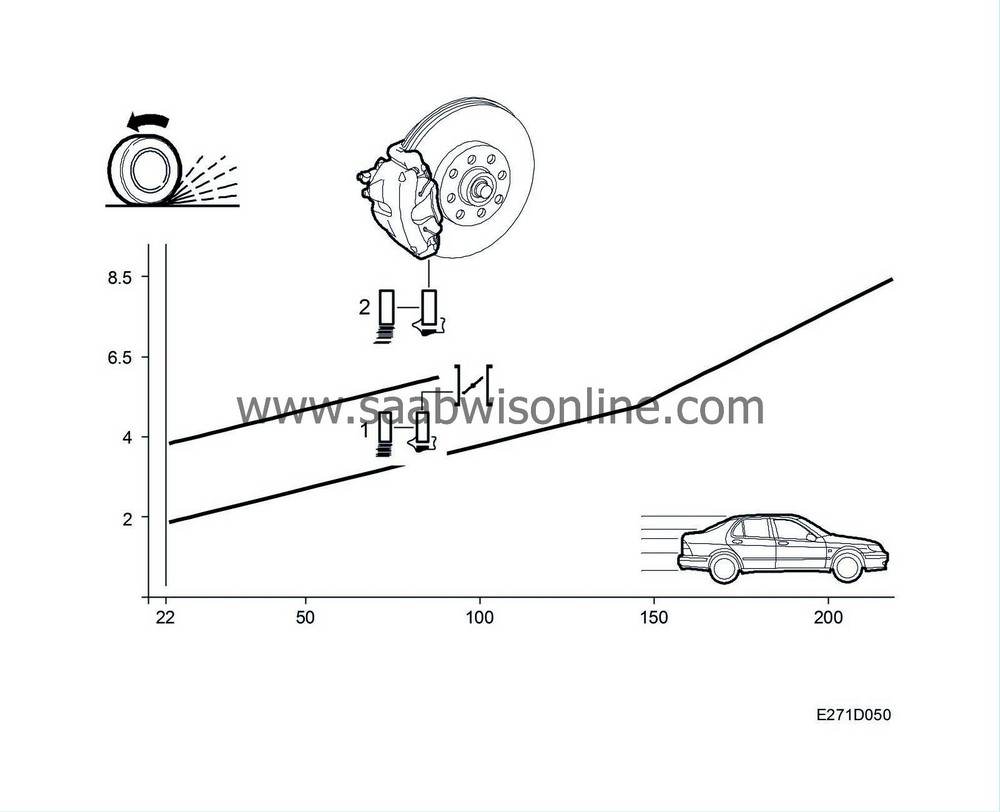TCS function
| TCS function |
To understand the TCS function it is best to assume that the road surface is slippery, with varying degrees of friction under the two drive wheels.
The rotational speed of the rear wheels is used as a reference for comparing the speed of the drive wheels individually. When either of the drive wheels rotates at a higher speed than the rear wheels, this is described as wheelspin. The magnitude of this wheelspin and the speed of the car are decisive for the manner in which the system works.
Traction is given priority at speeds below 22 km/h (13.5 mph) and the system then works primarily by braking, the purpose being to give a certain amount of braking torque to the drive wheel having the lowest friction (the wheel that first spins).
This allows more power to be transferred to the other drive wheel, which then has maximum traction. Through this distribution of the power applied to the wheels, the available friction can be utilized to maximum effect.
At higher speeds, priority is given to the transfer of lateral force so that steering control is maintained. The system then works primarily by limiting engine torque.
So that the sporty feel and handling of the car will still be retained when driving on slippery roads, and so that the available friction will be utilized to the full, a certain degree of wheelspin is always allowed. This varies with the speed of the car, the friction between tyres and road surface, and how “aggressively” the car is being driven (position of throttle pedal).
If the driver brakes during TCS modulation, the TCS function with brake application will be turned off and the braking function will be chosen. The TC/ABS control module will continue with TCS modulation using engine torque limitation.
| Low speed |

When starting on a slippery surface the following will happen:
The drive wheel having the lowest friction begins to spin first. When the wheelspin reaches 8.5 km/h (5.2 mph), TCS modulation starts by applying the brakes.
When the wheel is braked, additional tractive effort is transferred to the other wheel which still has a grip on the road. If the road surface does not have much friction, the other wheel may also start to spin and when it reaches 6.5 km/h (4 mph), the TC/ABS control module sends a request to the Trionic for engine torque limitation which then prevents further wheelspin.
The optimum combination of tractive power and steering ability is thus achieved as well as the same traction as with the use of a differential brake.
The upper limit for permitted wheel spin before modulation is engaged then gradually drops until a vehicle speed of 22 km/h (13.5 mph) is attained and then increases again for engine torque limitation and brake application.
A relatively high degree of wheelspin is accepted when starting in order to retain the feeling of sportiness and also enable the wheels to dig themselves down to a firmer surface whenever conditions make this necessary.
| High speed |

At 22 km/h (13.5 mph), the TCS function changes its way of working and starts to modulate using engine torque limitation of the wheel that first starts to spin, i.e. the wheel with the lowest friction.
The limit for modulation by brake application lies somewhat higher, which is to say that braking is used on the spinning wheel when engine torque limitation is inadequate.
Braking is used at speeds up to 100 km/h (62 mph).
Primary limitation of engine torque means that no extra tractive force is transferred to the outer wheel when cornering. The outer wheel then has a sufficient margin of grip to take up steering forces to the full. The driver avoids being taken by surprise as the front wheels suddenly lose traction.
At 22 km/h (13.5 mph), wheelspin is allowed to reach 2 km/h (1.2 mph) or about 9%. After that, the curve rises in a straight line to 150 km/h (93 mph) where a wheelspin of 5.2 km/h (3.2 mph) or about 3.5% is allowed. At 150 km/h (93 mph), the curve breaks again and permissible wheelspin will follow the increase in speed proportionally at about 3.5%.



